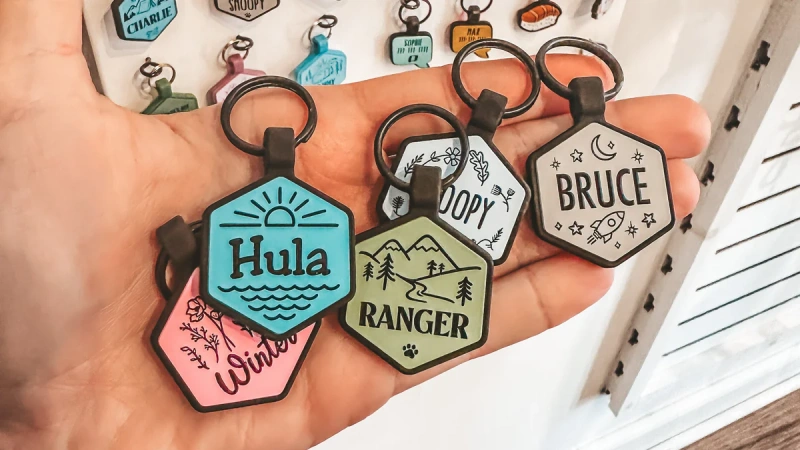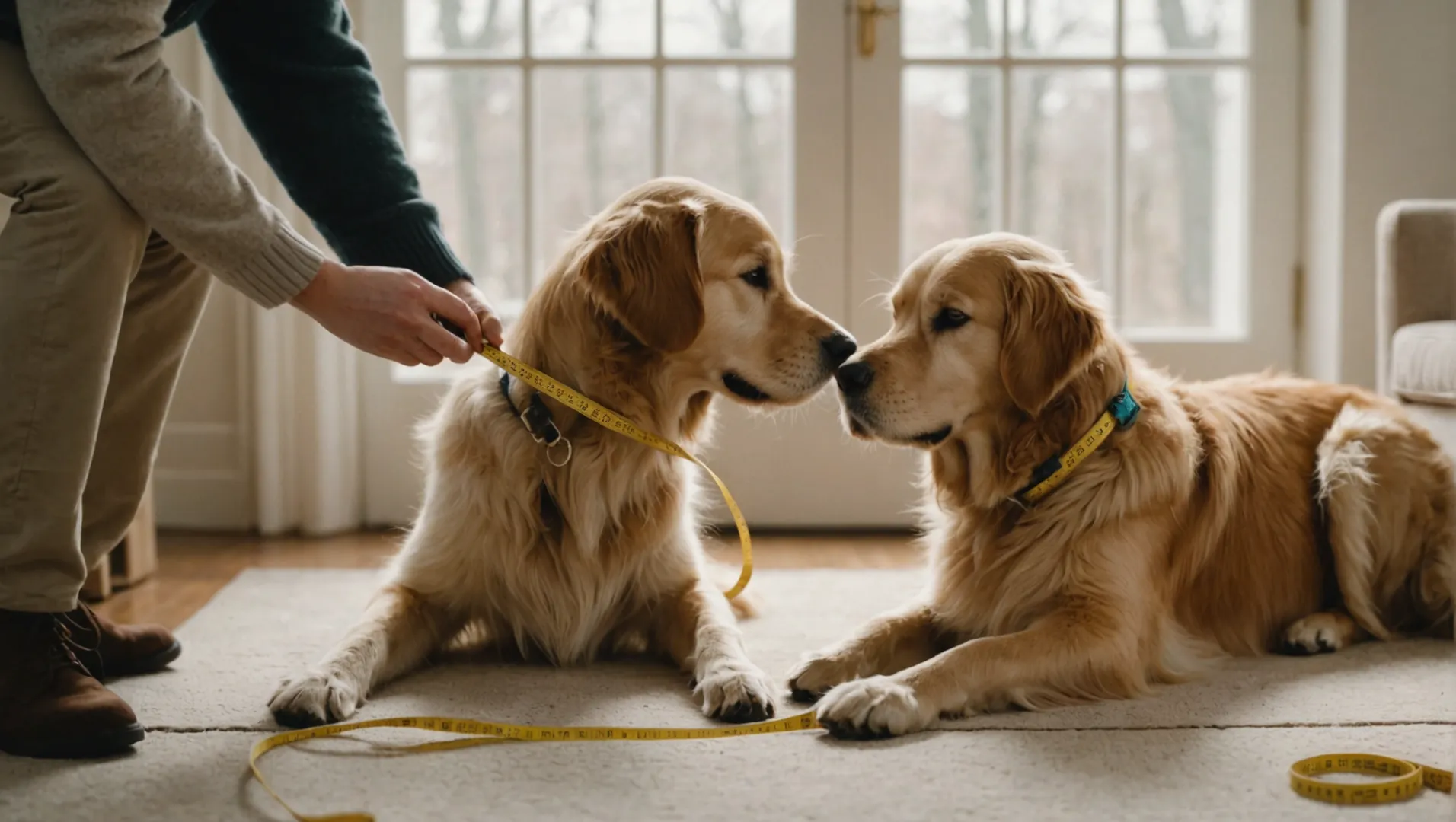
Ever struggled with getting your dog’s collar just right? You’re not alone! Finding that perfect fit is crucial for your pup’s comfort and safety, and it’s easier than you might think.
To measure a dog’s collar accurately, use a flexible measuring tape around the base of the neck, leaving space for two fingers between the tape and neck. This ensures a comfortable fit, balancing snugness with necessary breathing room.
But wait—there’s more to it than just wrapping a tape around their neck! Let’s dive deeper into some handy tips and tricks that can make this task a breeze.
A flexible measuring tape is essential for collar measurement.True
A flexible measuring tape ensures accurate neck measurements, crucial for a well-fitted collar.
What Tools Do You Need to Measure a Dog Collar?
Measuring your dog’s collar is crucial for ensuring comfort and safety, but what tools do you need?
To measure a dog collar, you’ll need a flexible measuring tape, pen and paper for notes, and treats to keep your dog calm. These tools ensure an accurate measurement, essential for choosing the right collar size.
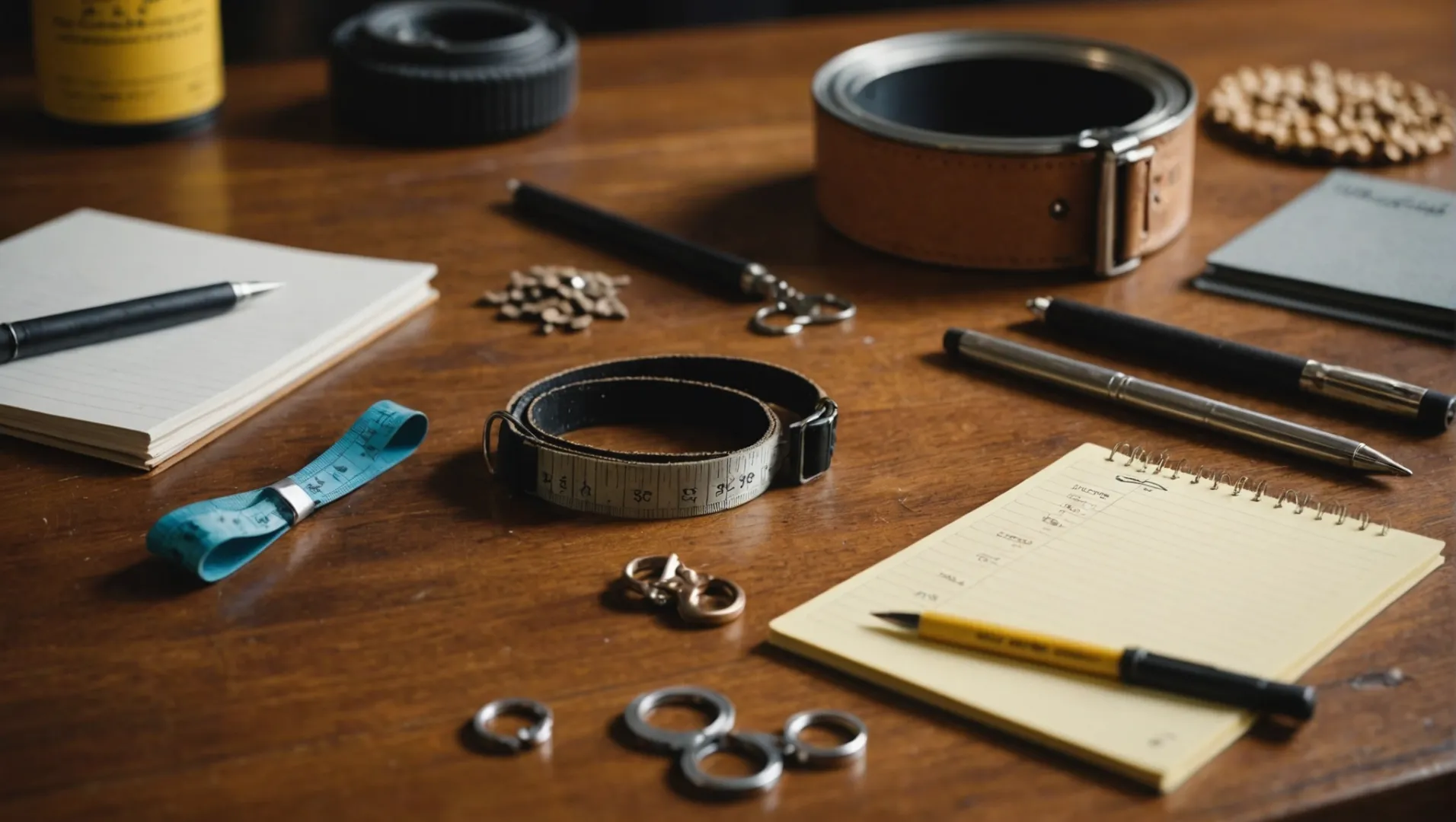
Essential Tools for Accurate Measurements
When it comes to measuring your dog’s collar, having the right tools can make the process smoother and more effective. Here’s what you’ll need:
-
Flexible Measuring Tape: This is the most important tool in your kit. A soft, flexible tape allows you to wrap it snugly around your dog’s neck without causing discomfort.
-
Pen and Paper: Keep these handy to jot down measurements. Recording each measurement is crucial to avoid mistakes when selecting a collar.
-
Treats: A little reward goes a long way in keeping your dog calm and still during the measuring process. Using treats can turn this task into a positive experience for your pet.
Steps to Measure with Precision
- Calm Your Dog: Ensure your dog is relaxed by offering them a treat. A calm dog is easier to measure accurately.
- Locate the Right Spot: Identify the base of the neck, just above the shoulders, where the collar will naturally sit.
- Measure the Neck: Wrap the measuring tape snugly around this area. Remember to leave space for two fingers between the tape and your dog’s neck to ensure comfort.
- Double-Check Your Work: Measure twice to confirm accuracy. It’s always better to be safe than sorry when it comes to your pet’s comfort.
- Record Measurements: Write down your findings immediately to prevent any mix-ups later on.
Alternatives When Measuring Tape Isn’t Available
Sometimes, you might not have a measuring tape handy. In such cases, consider these alternatives:
- String or Cloth: Wrap a piece of string around your dog’s neck, mark where it meets, and then measure this length with a ruler.
- Existing Collar Measurement: If you have an old collar that fits well, lay it flat and measure from the buckle to the used hole.
Each of these methods ensures that you’re getting an accurate neck measurement, which is vital for selecting a properly fitting collar.
Understanding the importance of using these tools can significantly impact how well a collar fits, affecting both safety and comfort. For more detailed guidance on measuring dog collars1, explore additional resources.
Flexible measuring tape is essential for collar measurement.True
A flexible tape ensures accurate and comfortable neck measurements.
Pen and paper are unnecessary for recording collar sizes.False
Recording measurements prevents mistakes when selecting a collar.
How Can You Use Alternative Methods Without a Measuring Tape?
No measuring tape? No problem! Discover easy, alternative methods to measure your dog’s neck accurately.
Without a measuring tape, use a string or cloth to wrap around your dog’s neck, mark the overlap, and then measure the string with a ruler. Alternatively, measure an existing collar that fits well from the buckle to the used hole. These methods ensure you get the right size collar without traditional tools.
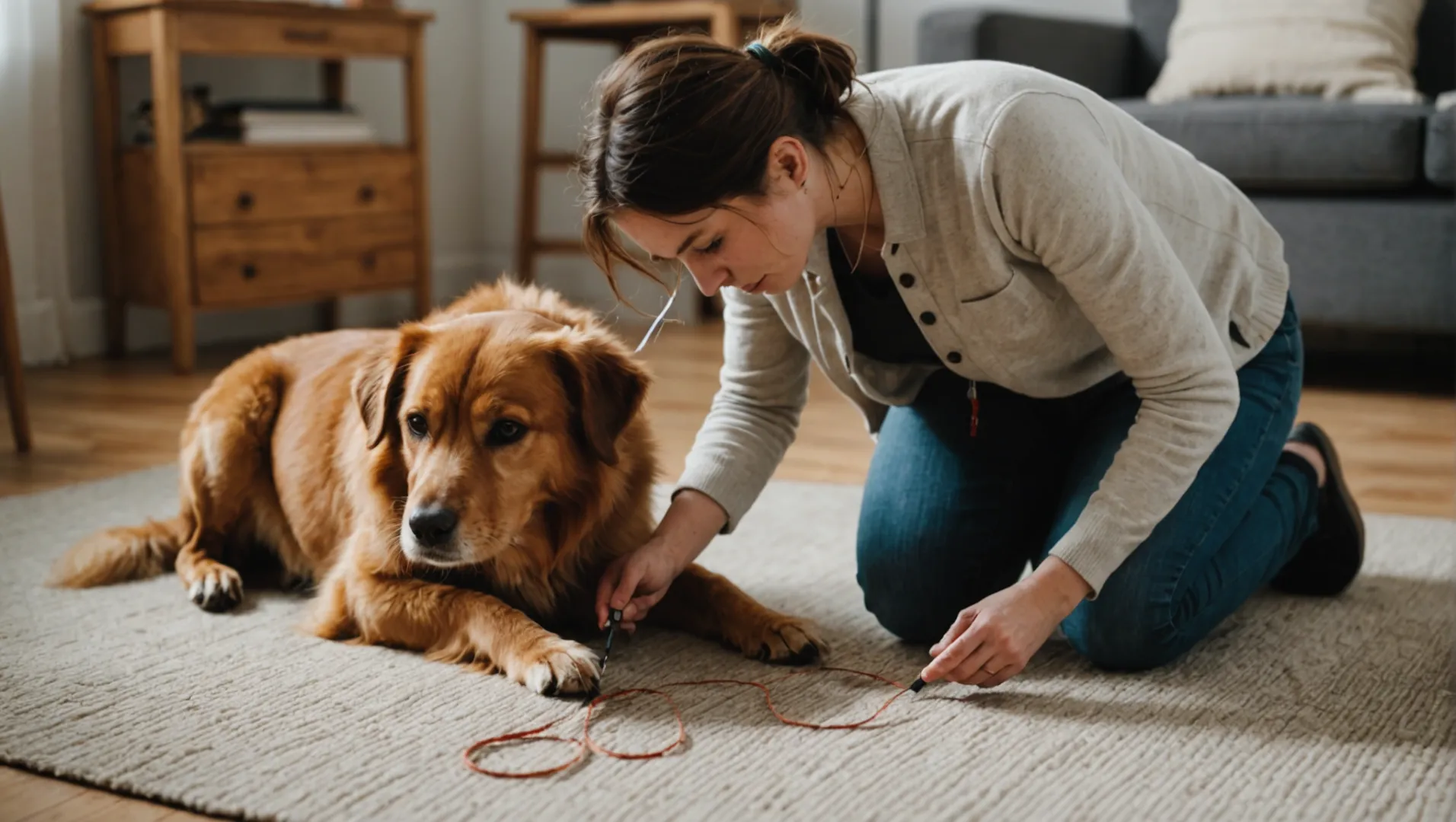
Using Everyday Items
When you find yourself without a measuring tape, household items like string or cloth can be excellent substitutes. Here’s how:
-
String Method: Wrap a piece of string around your dog’s neck where the collar would naturally sit, ensuring it’s snug but not tight. Mark where the string overlaps. Then, lay the string flat and measure its length with a ruler. This gives you an accurate neck size.
-
Cloth Strip: If you don’t have string, a strip of cloth will work similarly. Follow the same steps as with the string method.
These methods are not only practical but also incredibly accessible, as most households have these items readily available.
Measuring an Existing Collar
Another effective approach is using a collar your dog already owns:
-
Flat Measurement: Lay the collar flat and measure from the buckle to the hole that fits your dog best. This technique is particularly useful if your dog has outgrown their current collar but you still want to maintain a similar fit.
-
Comparison Technique: Compare an old collar with the size chart of new collars to ensure consistency in sizing.
Additional Tips and Tricks
-
Consider Elasticity: Some materials like elastic bands can be used similarly to string or cloth but ensure they don’t stretch while measuring, as this could lead to inaccuracies.
-
Using a Paper Strip: In absence of both string and cloth, a strip of paper can also suffice. Just make sure it’s long enough to wrap around your dog’s neck and durable enough not to tear easily.
By utilizing these alternative methods, you can ensure your furry friend is both comfortable and stylish in their perfectly fitted collar. Explore more about alternative measurement methods2 to get creative when measuring!
Understanding Your Dog’s Comfort
Remember that comfort is paramount when measuring for a collar. The two-finger rule still applies regardless of which method you choose. Ensure that whatever you use for measurement can accommodate this slight slack for ultimate comfort and safety.
Using a string is an accurate method for measuring a dog's neck.True
The string method provides precise measurements when marked and measured.
Elastic bands are ideal for measuring due to their stretch.False
Elastic bands can stretch, leading to inaccurate measurements.
Why is Understanding Collar Sizes Important?
Choosing the right collar size is crucial for your dog’s safety, comfort, and overall well-being. But why exactly does this matter?
Understanding collar sizes is vital because an ill-fitting collar can cause discomfort, restrict breathing, or even lead to injury. Ensuring the correct size promotes your dog’s safety and comfort, making walks and daily activities enjoyable and stress-free.

The Importance of Proper Fit
A collar that fits correctly ensures your dog remains comfortable and safe throughout daily activities. An overly tight collar can cause irritation, restrict breathing, or even lead to injury. Conversely, a collar that is too loose can slip off, potentially putting your dog in dangerous situations.
When a collar fits just right, it strikes a balance between snugness and mobility. This ideal fit allows two fingers to comfortably slide between the collar and your dog’s neck, ensuring they have enough room to breathe without compromising security.
Safety Concerns with Incorrect Sizes
Incorrectly sized collars can lead to numerous safety concerns. A tight collar might cause skin abrasions or hair loss around the neck area, while a loose one could lead to accidents if your dog manages to escape during a walk.
Moreover, certain breeds require special attention due to their unique neck shapes. For example, Greyhounds, with their slender necks, benefit from martingale collars that provide both comfort and security. Understanding these breed-specific needs is crucial to avoiding potential mishaps.
Enhancing Comfort and Well-being
The right collar size contributes significantly to your dog’s overall comfort. It allows them to move freely without restriction or discomfort. This aspect is especially important for active dogs that enjoy playtime and regular walks.
Additionally, collars should be checked regularly for signs of wear or damage. Replace them as necessary to maintain their effectiveness and ensure continued comfort for your pet.
Practical Examples of Size Categories
Dog collars are typically categorized by neck measurement ranges:
| Size | Neck Measurement (inches) |
|---|---|
| Small | 8-12 |
| Medium | 12-16 |
| Large | 16-20 |
| Extra-Large | 20-24 |
Selecting the appropriate category helps in narrowing down choices when shopping for collars. For growing puppies, an adjustable collar might be the best option to accommodate changes in size as they mature.
Conclusion: Making Informed Choices
By understanding the importance of collar sizes, you equip yourself with the knowledge needed to make informed decisions that prioritize your dog’s comfort and safety. Explore further resources on measuring dog collars accurately3 to enhance your expertise in choosing the perfect fit.
A loose collar can slip off during walks.True
Loose collars increase the risk of escape, endangering the dog.
All breeds require the same collar size.False
Different breeds have unique neck shapes, requiring specific collar sizes.
What Are the Different Types of Dog Collars?
Dog collars are more than just accessories; they serve various functions tailored to different needs and behaviors.
Dog collars come in several types: flat collars for everyday use, martingale collars for dogs with narrow heads, and nylon collars for affordability and versatility. Each type has specific benefits suited to different dog breeds and training requirements.
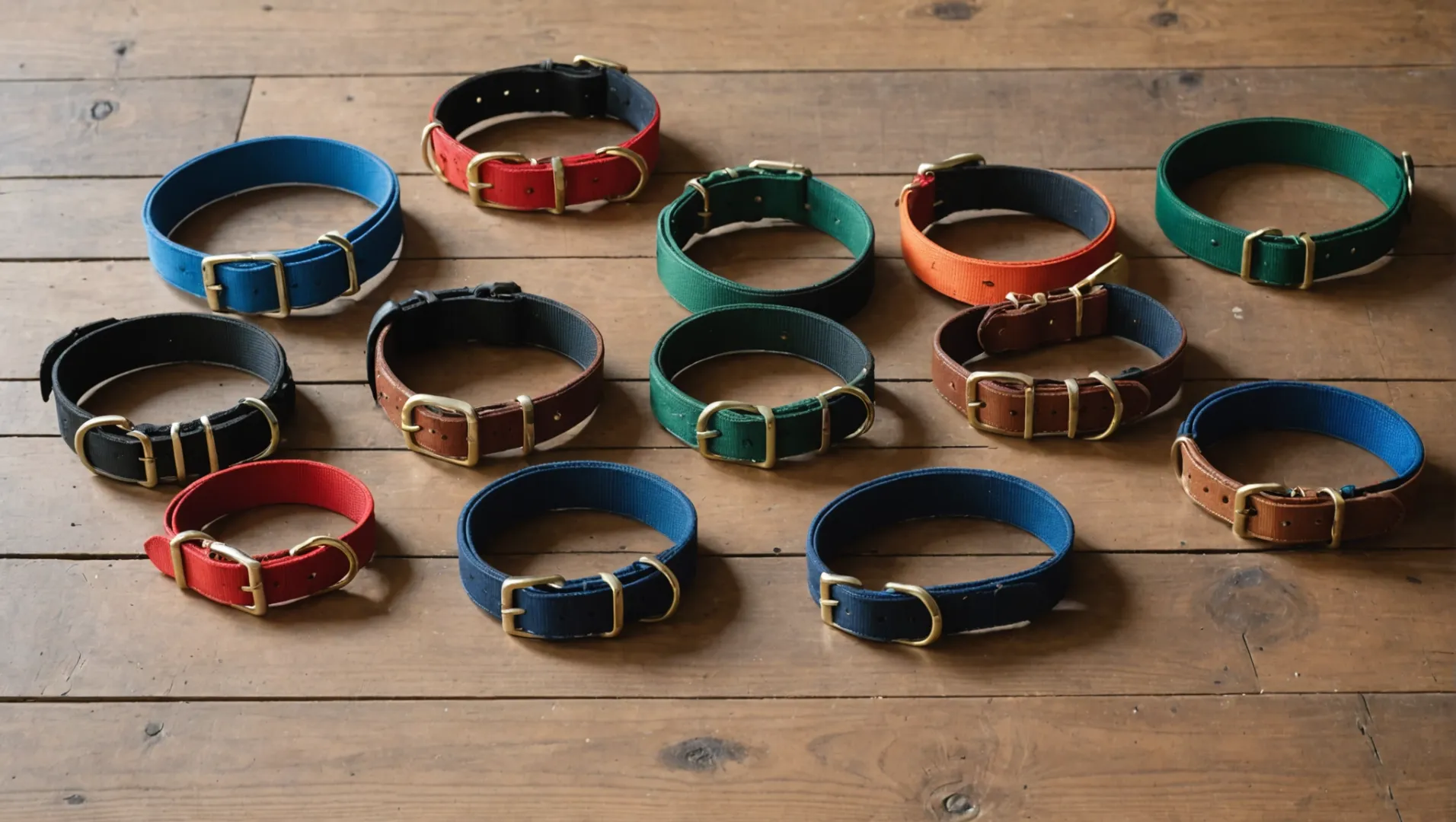
Exploring the Types of Dog Collars
Selecting the right collar for your furry friend involves understanding the unique features and benefits of each type. Here’s a closer look at some popular options:
Flat Collars: The Everyday Essential
Flat collars are the most common choice for everyday use. These collars are simple, adjustable, and often equipped with a buckle or snap closure, making them easy to put on and take off.
Benefits:
- Ideal for dogs that don’t pull or lunge on the leash.
- Available in a wide range of materials, colors, and patterns to suit your style.
- Can hold identification tags easily.
Martingale Collars: Safety for Narrow Heads
Martingale collars are designed for dogs with heads narrower than their necks, such as Greyhounds. They tighten slightly when pulled but don’t choke, preventing dogs from slipping out of the collar.
Benefits:
- Provides extra control for dogs that tend to pull.
- Reduces the risk of escape during walks.
- Gentle on the neck, distributing pressure evenly.
Nylon Collars: Versatile and Affordable
Nylon collars are popular due to their durability and cost-effectiveness. They are adjustable and available in various sizes, making them suitable for puppies and growing dogs.
Benefits:
- Easy to clean and maintain.
- Lightweight and comfortable for daily wear.
- Typically come in a variety of colors and designs.
Specialty Collars: Training and Beyond
While flat, martingale, and nylon collars serve general purposes, some collars are designed specifically for training or special needs:
| Type | Purpose |
|---|---|
| Prong Collars | Used in training to correct behavior; controversial due to potential harm. |
| Head Collars | Offer control by guiding the dog’s head; useful for large or strong dogs. |
| GPS Collars | Equipped with tracking technology for locating pets easily. |
Each collar type is crafted with specific intentions in mind, ensuring that you can find one that best suits your dog’s lifestyle and requirements. When choosing a collar, consider your dog’s size, behavior, and any specific challenges you may face during walks or training sessions. Explore more on collar selection4 to find the perfect fit for your canine companion.
Flat collars are ideal for dogs that pull on the leash.False
Flat collars are best for dogs that don't pull or lunge.
Martingale collars prevent dogs from slipping out.True
Martingale collars tighten slightly to prevent slipping.
Conclusion
Accurate measurements keep your furry friend safe and comfy. Regularly check their collar for wear, especially as they grow!
-
Provides step-by-step guidance on accurately measuring dog collars.: Not sure how to fit your dog for a collar? Watch this video and we’ll take you through it in a … ↩
-
Explore more creative ways to measure without traditional tools.: 2) (Gently) Use a phone charger cable. It’s easy and most everyone has one. Hold the end of the cable between your finger and thumb and and gently wrap the … ↩
-
Gain detailed insights into measuring techniques and tips for accurate fitting.: To get an accurately sized collar to fit your dog, measure the center of their neck with a cloth tape measure or piece of string, a few inches down from their … ↩
-
Discover more about different collar types to match your dog’s needs.: “Larger breeds benefit from sturdy, wide collars with strong buckles for added durability,” she explains. In most cases, nylon or leather can work well. ↩


